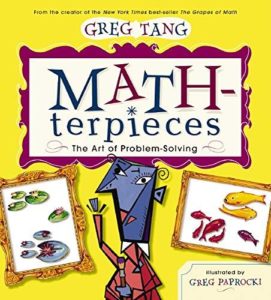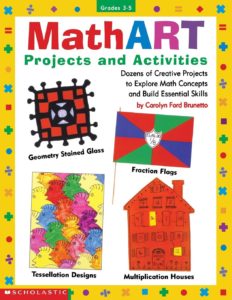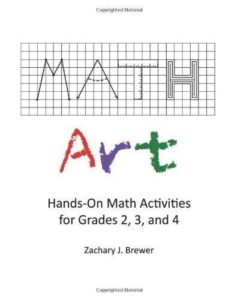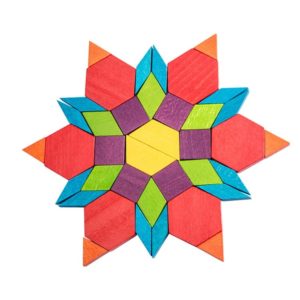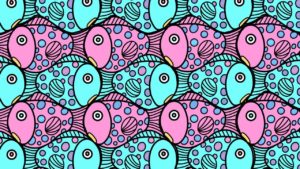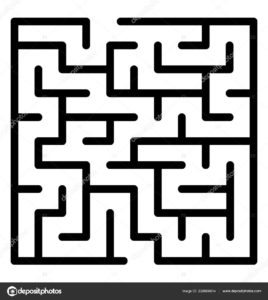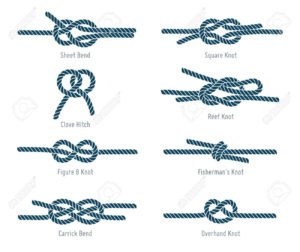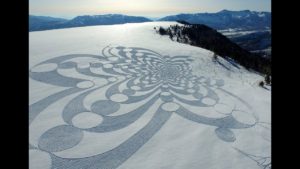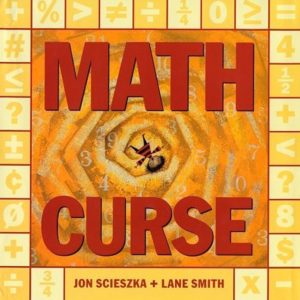 |
A collaboration of author Jon Scieszka and artist Lane Smith, Math Curse (Viking, 1995) is clever, funny, and thought-provoking. The curse – laid on the hapless narrator by her math teacher, Mrs. Fibonacci – causes her to think of everything (everything, from getting dressed in the morning to lunchtime pizza to birthday cupcakes) as a math problem. For ages 7 and up. |
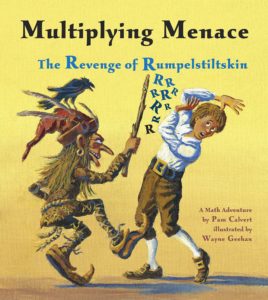 |
In Pam Calvert’s The Multiplying Menace: The Revenge of Rumpelstiltskin (Charlesbridge, 2006), the crown prince Peter has turned ten and Rumpelstiltskin is back, demanding payment for all that straw he spun into gold. Furthermore, he’s armed with a multiplying stick that he uses to awful effect, making things disappear (by multiplying them by fractions) or making them awkwardly big (say, by multiplying noses by six). Luckily Peter solves the problem with a clever math trick. Also see the sequel, The Multiplying Menace Divides. For ages 7-10. |
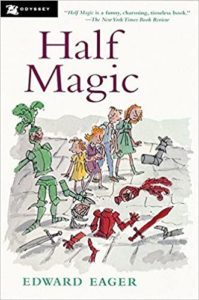 |
In Edward Eager’s Half Magic (Houghton Mifflin Harcourt, 1999), Jane finds a magic talisman that grants just half of every wish. She and her siblings – Mark, Katherine, and Martha – find that this makes for some complications. A great read for ages 8-12. |
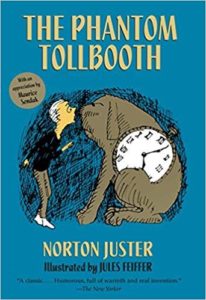 |
In Norton Juster’s The Phantom Tollbooth (Bulleseye Books, 1988), Milo passes through the Phantom Tollbooth and ends up in a magical country where he sets out on a quest to find the sisters Rhyme and Reason, thus restoring peace to the warring kingdoms of Dictionopolis and Digitopolis. A wonderful cast of characters and a lot of brilliant play on words and numbers. A must-read for ages 8-12. |
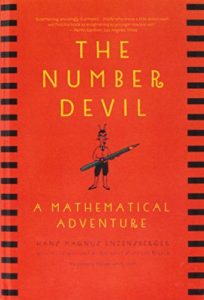 |
In The Number Devil by Hans Magnus Enzensberger (Metropolitan Books, 1997), Robert, twelve, loathes Mr. Bockel, his math teacher, who refuses to let him use his calculator and who afflicts him with word problems, such as: “If 2 pretzel makers can make 444 pretzels in 6 hours, how long does it take 5 pretzel makers to make 88 pretzels?” (“How dumb can you get?” said Robert.) Then one night Robert falls asleep and meets the Number Devil, a little bright red man the size of a grasshopper, dressed in knickers and carrying a silver-knobbed walking stick. The Devil, who has his own calculator (it’s slimy and green), introduces Robert – night by night – to the many fascinations of mathematics. Among these are the concept of infinity, “prima donna” numbers (those uppity primes that can only be divided by themselves and 1), repeating fractions, square roots, triangular numbers, Fibonacci numbers (and rabbits), factorials, topology, irrational numbers, and more. Humor, memory-sticking mathematical information, and a lot of terrific color illustrations for ages 10 and up. |
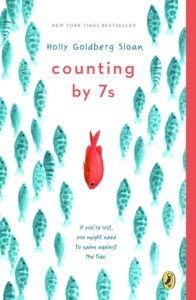 |
Twelve-year-old Willow Chance of Holly Goldberg Sloan’s Counting by 7s (Dial, 2013) is a scientific genius who loves gardens, books, and the number 7, but doesn’t have much luck with her peers. Then her adoptive parents are killed in a car crash and she’s left completely on her own – except for new friends Mai and Quang-ha, who live with their mother, Pattie, who has a manicure business, in a garage; her disturbed school counselor Dell Duke, and Jairo Hernandez, a Mexican taxi driver. A great story, interspersed with counting by sevens, for ages 10 and up. |
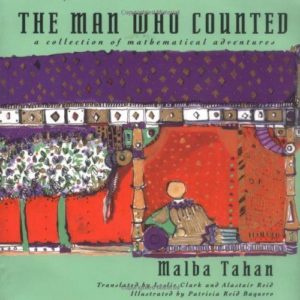 |
By the fictious Malba Tahan, The Man Who Counted (W.W. Norton & Company, 1993) is the Arabian-Nights-style tale of Beremiz Samir – a.k.a. the Man Who Counted – first encountered sitting on a rock by the side of the road, calling out mysterious and enormous numbers. The book, which purports to be Samir’s life story, is actually a series of puzzles: in one story, for example, Samir has to help three quarreling brothers settle their inheritance (35 camels, of which their father has left half to the oldest son, 1/3 to the middle son, and 1/9 to the youngest). In another, he has to determine the eye color of veiled concubines (the blue-eyed ones always lie and the brown-eyed ones always tell the truth). For ages 10 and up. |
| |
Read The Man Who Counted online here. |
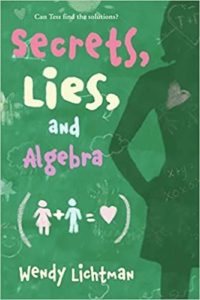 |
In Wendy Lichtman’s Do the Math: Secrets, Lies, and Algebra (Greenwillow Books, 2008), eighth-grader Tess sees the world in terms of math – in this case including tangles with friends, a school cheating scandal, and a mysterious death. Chapter titles are all math terms, such as “Inequalities,” “Graphs,” “Tangents,” and “The Quadratic Equation.” For ages 10-14. |
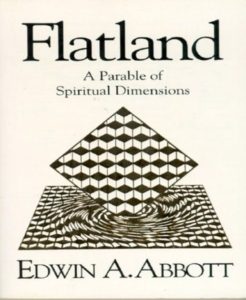 |
Edwin Abbot’s classic Flatland (Dover Publications, 1992), originally written in 1884, is a clever satire set in a two-dimensional world, where the women are lines and the men, polygons. The narrator, a Square, then meets a Sphere and discovers the third dimension. Not only math, but a critique of rigid Victorian society. For teenagers and adults. |
| |
At Project Gutenberg, the complete text of Flatland is available online. |
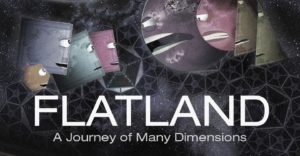 |
Flatland: The Movie (2007) is an excellent 34-minute animation, voiced by Martin Sheen, Kristen Bell, and Michael York. |
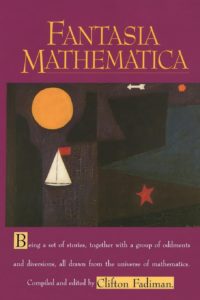 |
For the bookish mathematician, Clifton Fadiman’s Fantasia Mathematica (Copernicus, 1997) is a collection of stories, poems, and excerpts all drawn from the “universe of mathematics.” Included, for example, are Robert Heinlein’s sci-fi short story “And He Built a Crooked House,” Martin Gardner’s “The Island of Five Colors,” George Gamow’s “An Infinity of Guests,” and poems by Vachel Lindsay, Edna St. Vincent Millay, and Carl Sandburg. For teenagers and adults. |
| |
Mathematical Fiction is a long (over a thousand entries) list of books and stories incorporating math and/or mathematicians. For each title, there’s a synopsis, examples of math features, and a list of similar titles. |











